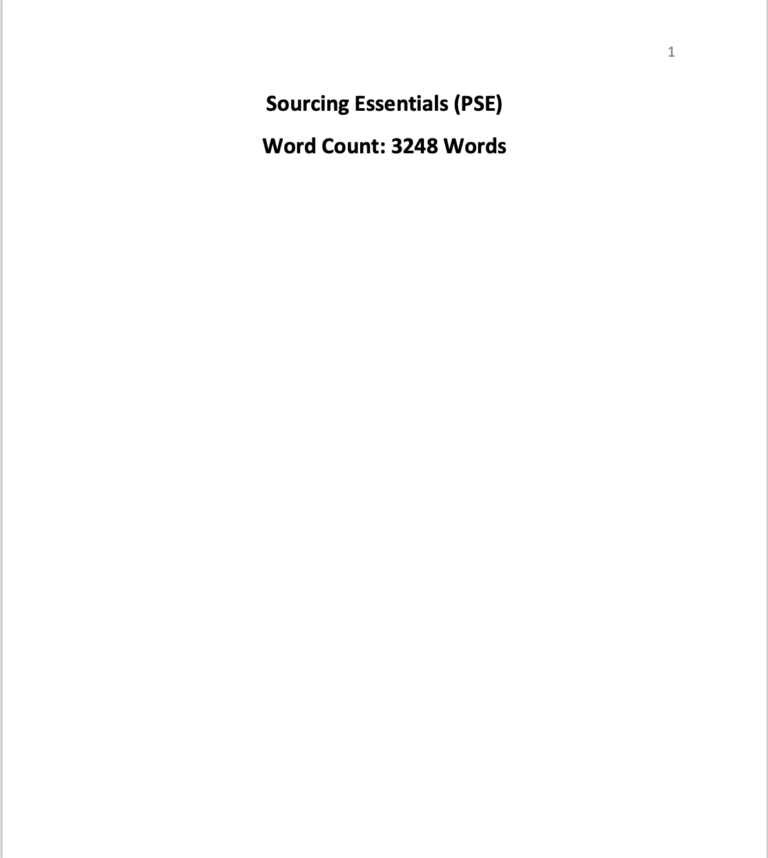Description
Solution
Statutory maternity, paternity and adoption rights in the UK apply before and after birth and adoption. Paternity and Adoption Leave Regulations 2002, Employment Rights Act 1996, and EmploymentProtection Act 1975 are related to statutory maternity, paternity and adoption rights.
Statutory right of 52 weeks maternity leave– In the UK, employees are eligible to take maternity leave if they have worked for at least 26 weeks. Based on the UK maternity pay and leave policy, the SMP is paid for 39 weeks to all employees, whereas the pay is equivalent to 90% of average earnings for the first 6 weeks before the tax. On the other hand, 156.66 British Pounds, equivalent to 90% of average weekly earnings for the last 33 weeks (Gov.uk, 2023).According to Employment Rights Act 1996, all pregnant employees are entitled to 12 months of maternity leave in the UK, which is relevant to 52 weeks of maternity leave (Legislation.gov.uk, 1996).
Statutory right for paternity leave and pay-Statutory Paternity Pay is applied with £156.66 per week of payment, or 90% of their average pay. Employee’s paternity leave and pay are calculated with maternity and paternity calculator. According to the Children and Families Act 2014 (UK), employees who worked for 26 weeks straight have the right to statutory paternity leave and pay during the paternity leave period (Legislation.gov.uk, 2014)
As evidenced in the UK legislations, the employees have the freedom of selecting to either take 1 week or 2 consecutive weeks leave. The time is the same irrespective of whether they have more than one child such as twins. The start date of the leave can either be during the actual date of birth of the child, agreed number of days after the birth, and agreed number of days after the expected week of childbirth. For the eligible employees, their statutory paternity pay is approximately £156.66 weekly or 90% of average weekly earnings (whichever is lower). Taxation and National Insurance Cover is supposed to be deducted.
Statutory right to return work– Employees in the UK who have been away 26 weeks or less are eligible to return to work. According to the Employment Protection Act 1975, full-time workers have the right to return to the same job after maternity and paternity leave (Legislation.gov.uk, 1975). Employers in True Health should includeterms and conditions related to this act and follow this to avoid legal complications.
“Adoption or shared parental leave & Pay”
On the contrary, shared parental leave is considered a term which enables employees to end or abolish their maternity leave or pay within the first year of the newborn (Maternityaction.org.uk, 2023). This enables one parent to work a full-time job and another to acquire maternal leave and payables.
“Right to Parental Bereavement Leave and Pay.”
Apart from other beneficiaries and allowances, it has been found that parental bereavement leave & pay are also considered among other rightful policies which are affiliated with the death of a newborn or if the child passed away within 18 to 24 weeks of pregnancy(Nidirect.gov.uk, 2023).
“Neonatal Leave and Pay”
Following an article by Arnautovic and Dammann (2022), Sturrart C Mcdonald introduced a bill to offer additional leave and pay employees accountable for childcare and receiving neonatal care services.
Please click the following icon to access the assessment in full
Related Papers
(Solution) CIPS Sourcing Essentials Assessment
- In this assessment, sourcing approaches have been identified and holistically reviewed. This is in line with RCU organisation IT spend category. This is further compared with payment services, document management category which is office suppliers and postal services.
- For evaluating the identified spend categories, various tools have been selected which are Kraljic Analysis Tool, Mendelow’s Analysis Tool for Stakeholder analysis and the Maslow Hierarchy of needs.
- Further, by using the SWOT analysis, the internal and external factors of the sourcing have been selected. A further analysis by use of Peter Block Grid’s has been applied to evaluate the interests of stakeholders to source appropriate position.
- The findings indicate that RCU adopts the best sourcing approach based on their needs.
- Finally, by using Carter’s 10Cs model, the best practice for pursuing suppliers appraisal has been provided for IT spend category.
(Solution) New CIPS PIN Effective Negotiation in Procurement and Supply
(Solution) New PSE Sourcing Essentials ROSHN Syndicate Cohort
- ROSHN should incorporate Porter’s Five Forces and PESTLE analysis into the organization’s Vendor Management Team (VMT)
- The expansion of the approved list of suppliers by not less than fifteen percent in the course of the next year is vital in eliminating reliance on a few suppliers.
- Improving eSourcing tools especially eAuctions to apply competitive pressures and lower costs of procurement. This will solve the problem of inefficiency in the tendering process and increase transparency while RHOSN already has efficient technology solutions for engaging suppliers.
- Obligatory implementation of a supplier sustainability program that identifies suppliers with high levels of CS



